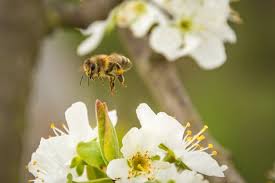Bees are essential to a thriving garden, as they pollinate many of the fruits, vegetables, and wildflowers we depend on. Unfortunately, bee populations are declining due to factors like modern agricultural practices, urban expansion, and habitat loss. By making a few thoughtful changes, gardeners can play a vital role in supporting these hardworking pollinators.
Why Bees Matter
Bees are crucial for pollination, which affects much of the food we eat and supports the entire ecosystem. As they move from flower to flower collecting nectar, they also carry pollen, fertilizing plants and enabling them to produce seeds and fruit. Without bees, the diversity of food and wildlife would drastically decrease. By fostering a bee-friendly garden, you’re helping both the bees and the broader environment.
How to Attract Bees to Your Garden
Creating a bee-friendly space is simple, and it benefits both your garden’s ecosystem and your harvest. Gardens, especially in urban areas, act as vital green corridors for wildlife. By providing bees with the right flowers, habitats, and resources, you can contribute to their survival and your garden’s productivity.

1. Choose Bee-Friendly Flowers
The first step in attracting bees is to select the right plants. Bees are drawn to flowers that provide both nectar and pollen, particularly single-flowered varieties over double flowers, which have fewer resources for pollinators. Planting a diverse range of flowers ensures there’s something for bees to enjoy year-round.
- Early Bloomers: Willows, hawthorns, fruit trees (apples, cherries, plums), crocus, and aubretia offer early food for bees coming out of hibernation.
- Summer Blooms: Clover, calendula, borage, and poached egg plants are excellent choices for summer.
- Late Flowers: Aster, echinacea, and ivy provide nectar when other flowers are winding down.
2. Plant Flowers Strategically
Bees prefer sunny, sheltered spots, so planting in clusters or swathes helps maximize their impact. Consider planting flowers along the edges of vegetable plots, or incorporate them into your garden’s design. Companion plants, like flowering beans, will also attract bees. The key is ensuring a continuous source of nectar and pollen throughout the year.

3. Let Some Areas Go Wild
Allowing parts of your garden to grow naturally can offer much-needed shelter and food for bees. Let grass grow longer in the winter, and leave hollow plant stems uncut to provide overwintering sites. Wild plants like dandelions and thistles are also excellent nectar sources. A less manicured lawn, with flowers like clover and daisies, encourages more bee foraging.
4. Provide Nesting Sites
Bees need safe places to rest and nest. Many wild bees use small holes in the ground or in decaying wood. You can enhance your garden’s appeal by offering dedicated habitats like bee hotels. These can be made by bundling hollow stems or drilling holes of various sizes in untreated wood. Place them in sheltered areas away from harsh weather.

5. Avoid Chemicals
Pesticides and herbicides harm bees and disrupt the natural food chain. Opt for eco-friendly alternatives, such as companion planting, netting, or using barriers like garden fleece. Manual methods like hoeing and mulching can keep weeds in check without harming pollinators.
Conclusion
Creating a bee-friendly garden isn’t just about attracting pollinators; it’s about fostering a balanced ecosystem. By choosing the right plants, offering shelter, and avoiding harmful chemicals, gardeners can help protect bee populations and enjoy a flourishing garden. Have you started making your garden more bee-friendly? Share your experiences in the comments below!
